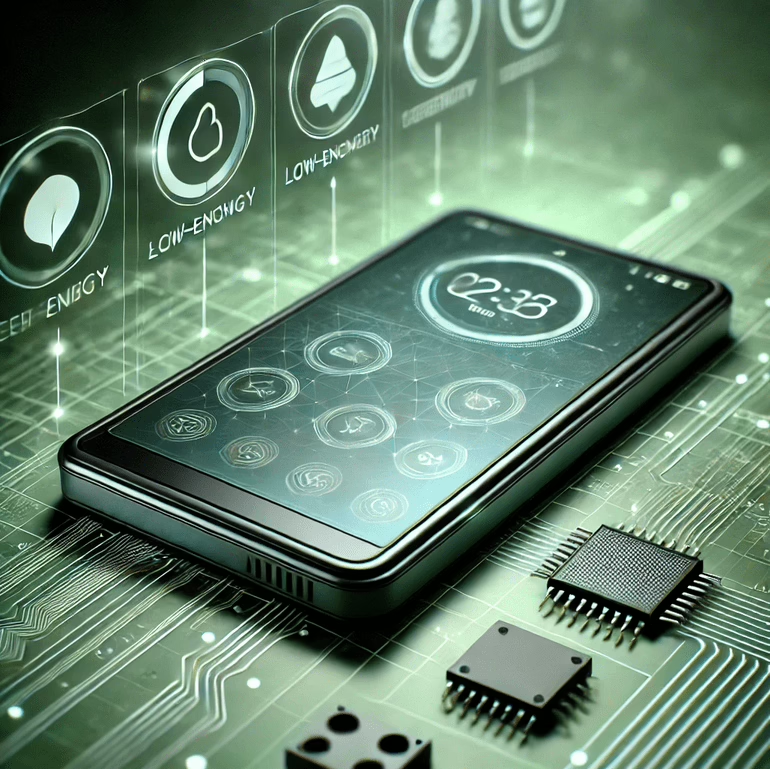Understanding Low Power Modes:
Enhancing Energy Efficiency in Modern Electronics
In the ever-evolving landscape of modern electronics, energy efficiency has become a paramount concern. The demand for devices that can perform complex tasks while consuming minimal power has driven the development and implementation of Low Power Modes. These operating states, also known as low-power states or sleep modes, are designed to significantly reduce power consumption when devices are not actively processing data or performing tasks. This blog article delves into the intricacies of Low Power Modes, their key characteristics, applications, and the pivotal role they play in today’s technology-driven world. Additionally, we will explore how Curate Consulting Services assists clients in finding specialized talent for staffing needs in this domain.
The Essence of Low Power Modes
Low Power Modes are a set of strategies employed in electronic devices to conserve energy by reducing power consumption to the lowest possible levels without compromising essential functionalities. These modes are integral to various electronic systems, including microcontrollers, embedded systems, and battery-powered devices. The primary objective is to extend battery life and improve overall energy efficiency, which is crucial for devices such as smartphones, IoT devices, wearables, and sensors.
Key Characteristics and Considerations
Reduced Power Consumption
The cornerstone of Low Power Modes is the substantial reduction in power consumption. By strategically lowering power usage, devices can operate for extended periods between battery charges. This is particularly beneficial for portable and battery-dependent gadgets.
Selective Component Shutdown
In Low Power Modes, specific components or subsystems of the device can be selectively powered down or put into a low-power state. For instance, the processor, display, and other peripherals may be temporarily deactivated to save energy.
Clock Gating
Clock gating is a technique used to minimize dynamic power consumption. By gating off clock signals to certain components, such as the central processing unit (CPU) or parts of the system, their operation is temporarily halted, resulting in significant energy savings.
Memory Retention
Certain low-power states allow for the partial shutdown of memory components while retaining essential data. This capability is vital for devices that need to quickly resume operation without losing critical information.
Wake-up Mechanisms
Devices in Low Power Modes often incorporate wake-up mechanisms that enable them to transition back to normal operating states in response to specific triggers. These triggers can include external events, interrupts, or timers.
Dynamic Voltage and Frequency Scaling (DVFS)
DVFS is a technique used in some Low Power Modes where the system dynamically adjusts the voltage and frequency of the processor based on workload requirements. This further contributes to energy savings by optimizing power usage.
Application in Battery-Powered Devices
Low Power Modes are extensively utilized in battery-powered devices to maximize battery life. In smartphones, IoT devices, wearables, and sensors, these modes play a crucial role in enabling devices to operate efficiently over extended periods. For example, a smartphone in standby mode can conserve power by deactivating non-essential functions while maintaining connectivity to receive calls and messages.
Real-Time Operating Systems (RTOS)
Real-time operating systems often include features for efficiently managing Low Power Modes. They provide mechanisms for transitioning between different power states based on real-time requirements, ensuring that devices can maintain optimal performance while conserving energy.
Trade-off with Performance
While Low Power Modes significantly reduce power consumption, there is often a trade-off with performance. Devices in Low Power Modes may experience slower response times, reduced processing capabilities, or limited functionalities. This trade-off is a crucial consideration in the design and implementation of these modes.
Environmental Impact
The adoption of Low Power Modes is not only beneficial for extending battery life but also contributes to reducing the environmental impact of electronic devices. By minimizing energy consumption, these modes help decrease the overall carbon footprint of technology, aligning with the growing demand for sustainable and eco-friendly solutions.
The Role of Curate Consulting Services in Specialized Talent Acquisition
As the technology landscape continues to evolve, the need for specialized talent in areas such as Low Power Modes becomes increasingly important. Curate Consulting Services is dedicated to helping clients find the right expertise to meet their staffing needs. Our approach involves understanding the unique requirements of each client and leveraging our extensive network of professionals to identify candidates with the necessary skills and experience.
Expertise in Low Power Modes
Our team at Curate Consulting Services recognizes the importance of Low Power Modes in modern electronics. We have a deep understanding of the technical intricacies and industry trends, enabling us to identify and recruit top-tier talent proficient in these areas. Whether it’s for developing energy-efficient microcontrollers, optimizing embedded systems, or enhancing battery-powered devices, we connect clients with experts who can drive innovation and efficiency.
Customized Talent Solutions
We offer customized talent solutions tailored to the specific needs of our clients. Our process begins with a comprehensive assessment of the client’s requirements, followed by a targeted search for candidates who possess the right blend of technical knowledge and practical experience. This ensures that our clients have access to professionals who can contribute effectively to their projects and initiatives.
Building Long-Term Relationships
At Curate Consulting Services, we believe in building long-term relationships with our clients. We work closely with them to understand their evolving needs and provide ongoing support to ensure their success. Our commitment to excellence and client satisfaction has made us a trusted partner in the realm of specialized talent acquisition.
Conclusion
Low Power Modes are essential strategies for optimizing energy usage in electronic devices, striking a balance between functionality and power efficiency. As the demand for energy-efficient and sustainable technologies continues to grow, the implementation of Low Power Modes will play an increasingly vital role in the design and operation of modern electronics.
Curate Consulting Services is dedicated to helping clients navigate this complex landscape by providing specialized talent solutions tailored to their needs. Our expertise in Low Power Modes and commitment to client success make us the ideal partner for organizations looking to enhance their technological capabilities and drive innovation.
By understanding and leveraging the potential of Low Power Modes, businesses can achieve greater energy efficiency, extend the lifespan of their devices, and contribute to a more sustainable future. Whether you are a candidate seeking opportunities in this field or an enterprise leader looking to optimize your technology stack, Curate Consulting Services is here to support you every step of the way.




